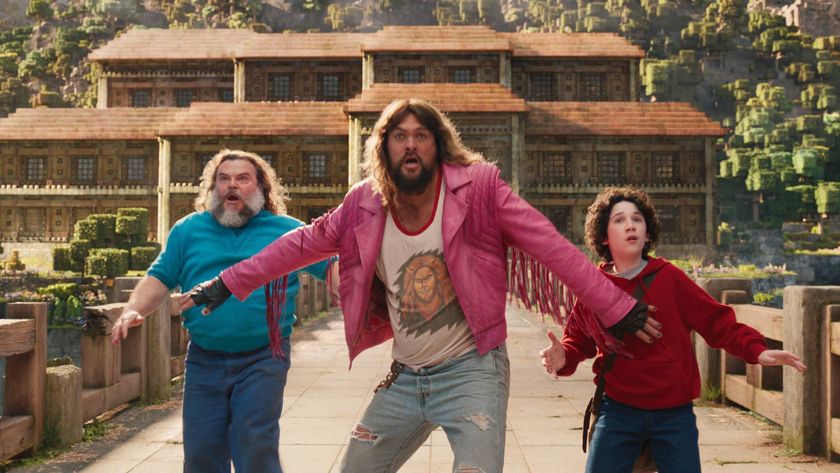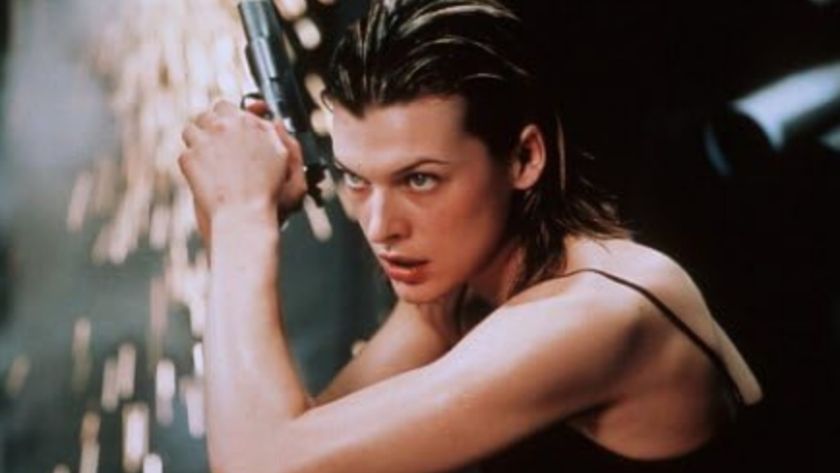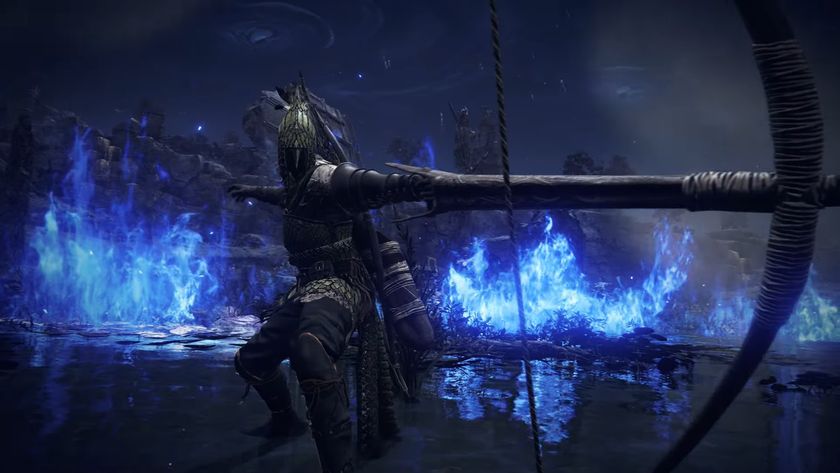The Story Behind Up
The long flight to the screen for Pixar’s latest...
Pixar’s 10th film was chosen to open the prestigious Cannes film festival today - which evokes the curious image of a bunch of sharp-suited/ballgowned people crowding into a cinema, slipping on 3D glasses and watching a cartoon .
But then, this is Pixar, and Up is much, much more than just another cartoon. Here's how it all happened...
1. Thank Wall-E.
Yes, Pixar’s little robot is actually responsible for both Monsters Inc. and Up . Why? Because co-writer/director Pete Docter actually worked on cracking the script for the film before deciding to leave it in the capable hands of Andrew Stanton. Twice.
For a while way back in 1995, Stanton and Docter worked together on developing Wall-E, then called Trash Planet, and focused on the droid plus the gel-like “aliens” that were originally planned to be the focus of the second act.
But Docter just couldn’t get a handle on what the film should be – leaving first to make Monsters, then revisiting an idea he’d had even before trying to crack Wall-E.
That idea? It was based around a sketch…
Sign up for the Total Film Newsletter
Bringing all the latest movie news, features, and reviews to your inbox
Next: It Began With Balloons [page-break]
2. It Began With Balloons
Even before Wall-E was developing, Pete Docter had a notion of escaping from the annoyances of everyday life by somehow just... floating away.
Docter had always been a socially awkward child and, as an animator, preferred to work rather than attend lots of meetings. But sadly for him, producing big films like Toy Story and Monsters Inc. led to plenty of intense conference room sessions.
His need for alone time expressed itself in a whimsical, Miyazaki-like image which Docter sketched in 2004 - a flying house strung with hundreds of balloons.
From there, Docter and co-writer/co-director Bob Peterson began to flesh out the concept, with a little help from The Station Agent writer/director Thomas McCarthy.
What they settled on was an old, grouchy, set-in-his-ways codger with an oddl adventurous side.
Carl Frederickson was born…
Next: Finding The Grouch [page-break]
3. Finding The Grouch
“I did a really early drawing of this grouchy guy with these colourful, happy, fun balloons, smiling and stuff,” Docter told Moviehole, "and I just thought he really contrasted that.”
Many influences seem to have been poured into Carl – Spencer Tracy and Walter Matthau were among the actors that the team studied, and they also watched home-movie footage and brought stories about their own grandparents together.
"Bob and I just sat in a room and started throwing ideas out,” recalls Docter. “Like, ‘What interests you? What elements would make a good film?’. And a crusty, grouchy old man really feels appealing to me and to Bob. We just felt like there was a lot of entertainment possibility there.
"There’s a rich history of grouchy old men characters - just look at the George Booth cartoons in the New Yorker.”
Another inspiration was classic Disney animator Joe Grant, who consulted on the script and helped solidify what old folk could get away with for Docter.
"He has this charm and this 'old man license' to say things that other people couldn’t get away with,” says the director. “It's like how we would go to eat with Joe Grant and he would call the waitresses 'honey'. I wish I could call a waitress 'honey'.”
With a main character in mind, and a story formulating about the nature of Carl's adventure, Docter and co needed to do some on-the-spot research. Time to travel…
Next: Field Trip [page-break]
4. Field Trip
The original plan for Carl’s destination was a desert island, but Docter quickly realised that it might feel like a cliché.
Thanks to a little help from writer/art director Ralph Eggleston (a member of the Pixar 'Brain Trust' who worked on Monsters, Inc ), Docter watched a video of the Tepui Mountain Range in Venezuela, quickly realising it would make the perfect setting.
So Docter, producer Jonas Rivera and eleven other Pixar team members set off for Venezuela.
“We hired this great British explorer/filmmaker, Adrian Warren to take us down there,” Rivera told Total Film. “We bought everything you could possibly buy for the trip. And then we get there and the porters are just wearing sandals and shorts. We looked like idiots!"
Despite the clothing issues, the team came away with plenty of sketches, paintings and, more crucially, a setting for the majority of the movie.
Now they needed the rest of the story…
Next: Heart & Soul [page-break]
5. Heart & Soul
Docter’s first plan for Carl was much more poignant than the final version he settled upon.
“At first, Carl just wanted to join his late wife up in the sky," Docter says. "It was almost a kind of strange suicide mission or something. And obviously that's a problem. Once he gets airborne, then what? So we had to have some big goal for him to achieve."
Eventually, Docter and Peterson weaved a story that follows Carl trying to live the adventure that he and his wife Ellie always planned but never achieved.
Over time, the narrative evolved to show a quick recap of the couple’s life together – which is one of the finished film’s most affecting moments, a 4 ½ minute waltz through their relationship – before sending Carl off on his journey.
To add extra kid appeal, the writers also created Kevin, a colourful, wacky bird that lives in the Mountains, and Dug, a dog with a clever collar that lets the pooch speak whatever he’s thinking.
Later in the process, Docter hit upon the idea of including a child character, in the form of wilderness explorer Russell.
The overly excitable scout – based on hyper Pixar animator Pete Sohn – provided the creators with someone who could soften Carl’s character, while still making his life hell.
"He's not really ready for the whirlwind that a kid is - as few of us are,” Docter told Animation World.
And as for Carl’s look? That would need some cartoon tweaking…
Next: 'Toon Army [page-break]
6. ‘Toon Army
For the look of Carl and co, Docter decided to stylize, rather than trying to make the characters appear real.
"Characters are always hard,” he admits. “I did a bunch of animation on Toy Story , and, in my opinion, the humans were the least successful part. It's the whole thing of the ‘uncanny valley’ (where the characters’ creators stretch for realism, but they just seem almost real - and so weird and a bit creepy).
"So we've tried to keep them stylized, but still get the essence of who they are, which, of course, is what animation is all about.”
Carl is designed as a square character, which reflects his personality. “He's stuck in his ways,” says Docter. "He's had the same breakfast for the last 50 years, he has the same schedule. And so everything that happens disrupts him.”
Despite the cartoony nature of the film, the technical challenges were still, well, challenging.
“The hardest thing was the look," says Docter. "We have trained our Technical Directors to do almost everything. And we said, ‘Alright, on this film, we want you to do all of that, but we want you to do it wrong!’
“We have a character who, instead of six heads tall, he’s three heads tall. He’s got these short, little, stumpy arms... The way cloth would behave, ignore the way it works in real life. Here’s how I want it to look in this film...’
"So we had to subvert everything we knew. It was really hard to achieve, both artistically and technically. Hopefully, it’s not obvious, it’s kind of invisible...”
The characters were coming along. But they needed to be brought to life…
Next: Getting The Voices [page-break]
7. Getting The Voices
While the characters were being designed, Docter and co. began to seek out a voice cast, settling on the 79-year-old Ed Asner for Carl. Asner impressed them immediately, and ended up closer to Carl’s personality that he’d probably like to admit.
"When we first met Ed and showed him a small sculpture we'd made of Carl, he said, growling, 'I don't look anything like that!' And we thought, 'OK, this is gonna be perfect!'” Docter told Time Magazine.
For Russell, Pixar followed its usual route and picked a non-professional actor for the role - young Jordan Nagai. "When he had to be excited, he would get maybe 50%,” Docter told Time.
“So I'd tell him, 'Run around the room, then run back here and say the line — ready, set, go!' We'd do it one line at a time like that."
The physical aspect of the process even helped when avian pal Kevin tickles Russell.
“I actually lifted him upside down and tickled him," Docter says, "which you probably couldn't do with Ed."
With the movie now solidly in production, it was time to take it into another dimension…
Next: 3D Or Not 3D? [page-break]
8. 3D Or Not 3D?
Up is Pixar’s first attempt to make a story that works in the digital 3D style, and while the company appears to be embracing the technology wholesale - retro-fitting their back catalogue, including Toy Story , with the new tech - the team were wary of gimmickry...
“I think it adds a sort of a depth but it was important to not have the technology detract from the story,” says Docter.
“Some films... do a lot of ooga-booga, you know, reaching out. And for this type of film, we're trying very hard to make it as subtle as possible. It adds to the richness, to the depth of the environments.
“You walk through the jungle, and you can see all of these layers going back."
“I think the flying as well,” adds Rivera. “They go up in the sky, and look through the clouds... we're enhancing the 3D by using the screen as a window, looking in, as opposed to breaking things out into the cinema.
“So it's sort of treating it like theatre, where you're looking through at the stage and it really gives the whole thing a nice depth.”
Next: Putting The Word Out [page-break]
9. Putting The Word Out
The first audiences saw of Up - in the teaser trailer - was startlingly similar to Docter’s original idea for the movie – a house floating away on balloons, with Carl in place.
In typical Pixar style, that's was all there was – a tantalising hint of what was to come.
The full trailer, however, featured much more of the other characters – as you can see below.
And, employing a new method of marketing, the company has also been releasing ' Upisodes ' - little snippets of footage (usually shorts featuring the characters that won’t end up in the film).
But that was just the start of the campaign…
Next: The 45-minute Effect [page-break]
10. The 45-minute Effect
Earlier this year, Docter and his producer screened the first 45 minutes of the movie at a couple of press events, which totalfilm.com attended.
The result? Masses of positive press for the film, which, even with only half of the plot available, looked like another clear winner for the Emeryville animation gods.
You can check out our chat with Rivera and Docter after the screening here . But be warned – it’ll just make you want to see the film right now.
And, while the lucky few at Cannes will get to see it, UK audiences will have to wait until October to get a proper look…
Or, if you're quick, you might be able to pick up a ticket to our special Red Carpet Preview screening in London on June 17th . Go here for details...
Like This? Then try...
- The Story Behind Where The Wild Things Are
- The Story Behind Iron Man
- The Story Behind Ghostbusters 3
Sign up for our free weekly newsletter for the latest news, features and reviews delivered straight to your inbox.
James White is a freelance journalist who has been covering film and TV for over two decades. In that time, James has written for a wide variety of publications including Total Film and SFX. He has also worked for BAFTA and on ODEON's in-cinema magazine.

14 years after the game was released, the cast of A Minecraft Movie think now is the perfect time for the adaptation to hit screens: "There's so many reasons"

Barbarian director says his "wild" Resident Evil movie will be "unlike any of the previous films", says it was "built in the spirit of the games"











